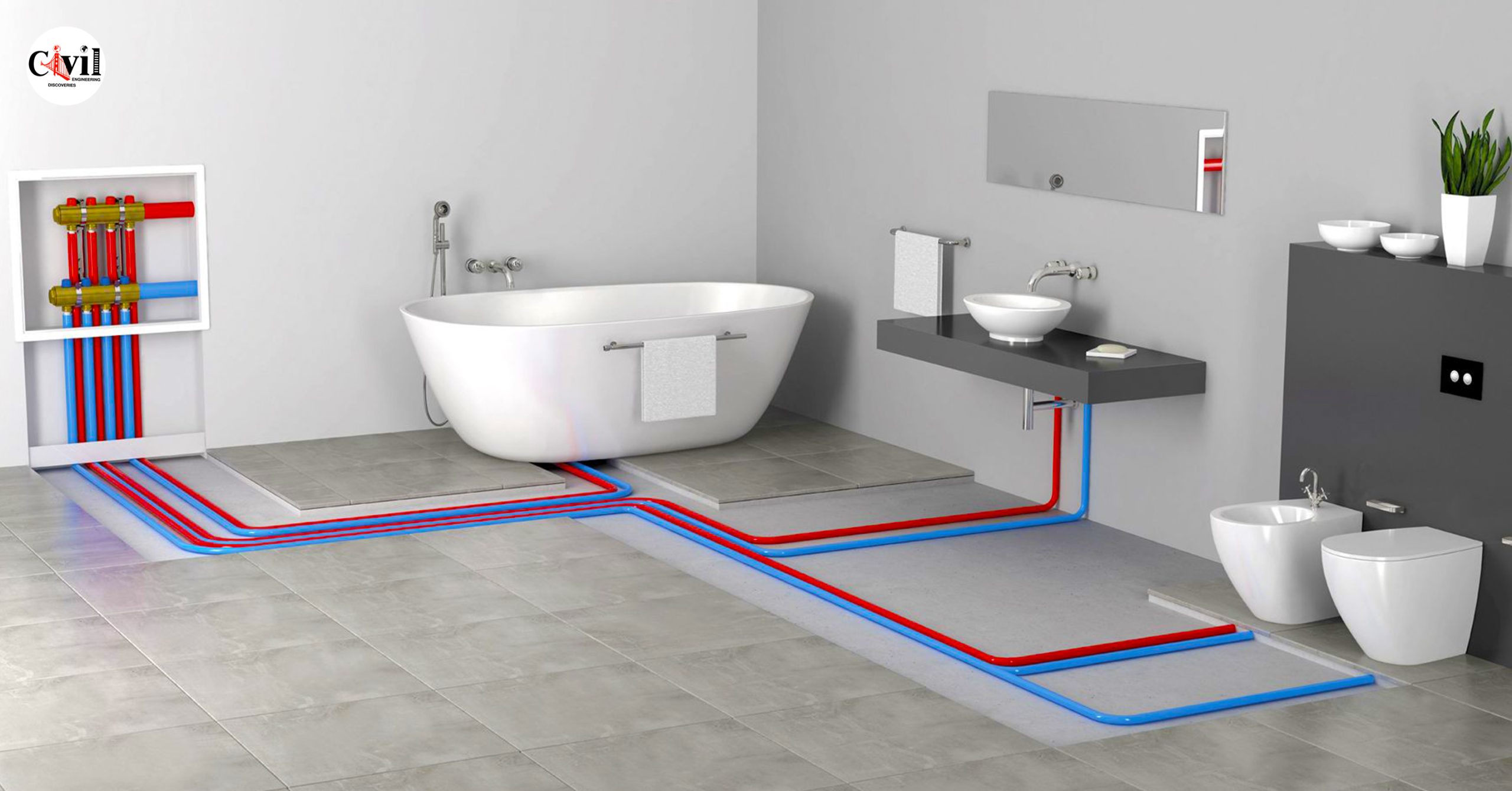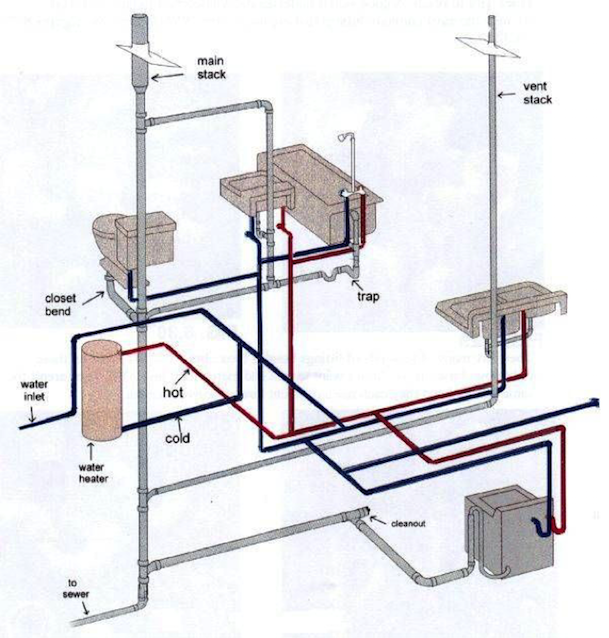Essential Insights About Your Home's Plumbing System Anatomy
Essential Insights About Your Home's Plumbing System Anatomy
Blog Article
We have encountered the article involving Exploring Your Homes Plumbing Anatomy down the page on the net and thought it made sense to share it with you on this site.

Comprehending exactly how your home's plumbing system works is vital for each property owner. From supplying tidy water for alcohol consumption, cooking, and bathing to safely removing wastewater, a well-maintained pipes system is important for your household's health and convenience. In this thorough overview, we'll discover the complex network that comprises your home's plumbing and offer tips on maintenance, upgrades, and dealing with typical issues.
Introduction
Your home's pipes system is more than simply a network of pipes; it's a complicated system that ensures you have access to tidy water and reliable wastewater removal. Knowing its components and just how they collaborate can assist you prevent costly repair services and guarantee every little thing runs efficiently.
Basic Components of a Pipes System
Pipes and Tubing
At the heart of your pipes system are the pipelines and tubing that lug water throughout your home. These can be constructed from different materials such as copper, PVC, or PEX, each with its benefits in regards to toughness and cost-effectiveness.
Fixtures: Sinks, Toilets, Showers, etc.
Components like sinks, bathrooms, showers, and bath tubs are where water is utilized in your home. Recognizing exactly how these fixtures connect to the pipes system assists in diagnosing troubles and preparing upgrades.
Shutoffs and Shut-off Factors
Valves control the circulation of water in your plumbing system. Shut-off valves are critical during emergency situations or when you need to make fixings, enabling you to separate parts of the system without interrupting water flow to the whole house.
Water System
Key Water Line
The primary water line connects your home to the municipal water system or a private well. It's where water enters your home and is dispersed to various components.
Water Meter and Pressure Regulator
The water meter procedures your water usage, while a pressure regulatory authority guarantees that water moves at a risk-free stress throughout your home's plumbing system, stopping damage to pipes and fixtures.
Cold Water vs. Hot Water Lines
Recognizing the distinction in between cold water lines, which supply water directly from the primary, and warm water lines, which lug warmed water from the water heater, helps in fixing and preparing for upgrades.
Water drainage System
Drain Water Lines and Traps
Drain pipes bring wastewater far from sinks, showers, and toilets to the sewer or sewage-disposal tank. Traps avoid drain gases from entering your home and likewise catch debris that might trigger obstructions.
Air flow Pipelines
Air flow pipelines allow air into the water drainage system, avoiding suction that might reduce water drainage and create catches to vacant. Correct air flow is crucial for keeping the integrity of your plumbing system.
Value of Correct Water Drainage
Guaranteeing appropriate water drainage prevents backups and water damages. Frequently cleansing drains and preserving catches can prevent expensive repair services and expand the life of your plumbing system.
Water Heating System
Sorts Of Water Heaters
Water heaters can be tankless or conventional tank-style. Tankless heaters warmth water on demand, while containers save warmed water for immediate use.
How Water Heaters Connect to the Plumbing System
Comprehending exactly how water heaters link to both the cold water supply and warm water distribution lines aids in diagnosing problems like not enough hot water or leaks.
Maintenance Tips for Water Heaters
Consistently flushing your water heater to eliminate debris, examining the temperature level setups, and inspecting for leaks can extend its life-span and improve power performance.
Common Pipes Problems
Leakages and Their Causes
Leaks can take place due to aging pipelines, loose fittings, or high water stress. Addressing leaks immediately protects against water damages and mold growth.
Obstructions and Obstructions
Clogs in drains pipes and toilets are commonly caused by purging non-flushable things or an accumulation of oil and hair. Utilizing drain displays and bearing in mind what decreases your drains pipes can avoid obstructions.
Signs of Plumbing Troubles to Look For
Low water stress, slow drains pipes, foul odors, or uncommonly high water bills are signs of possible pipes issues that need to be attended to promptly.
Pipes Maintenance Tips
Routine Inspections and Checks
Schedule yearly plumbing inspections to capture concerns early. Search for signs of leaks, corrosion, or mineral accumulation in faucets and showerheads.
DIY Upkeep Tasks
Straightforward tasks like cleaning tap aerators, looking for toilet leakages utilizing dye tablet computers, or insulating revealed pipelines in cold environments can stop major pipes problems.
When to Call a Professional Plumbing Professional
Know when a plumbing issue calls for expert expertise. Attempting complex repair work without correct expertise can cause more damage and greater repair service expenses.
Upgrading Your Pipes System
Factors for Upgrading
Upgrading to water-efficient components or replacing old pipes can boost water quality, reduce water costs, and boost the value of your home.
Modern Plumbing Technologies and Their Advantages
Check out technologies like clever leakage detectors, water-saving toilets, and energy-efficient hot water heater that can conserve money and lower ecological influence.
Cost Factors To Consider and ROI
Determine the ahead of time expenses versus long-term cost savings when considering pipes upgrades. Many upgrades spend for themselves with lowered utility expenses and less repair work.
Environmental Influence and Conservation
Water-Saving Fixtures and Devices
Installing low-flow faucets, showerheads, and commodes can significantly decrease water use without sacrificing performance.
Tips for Minimizing Water Use
Straightforward routines like taking care of leakages promptly, taking shorter showers, and running full tons of washing and recipes can conserve water and lower your energy costs.
Eco-Friendly Pipes Options
Take into consideration lasting pipes materials like bamboo for flooring, which is durable and green, or recycled glass for kitchen counters.
Emergency Preparedness
Steps to Take During a Plumbing Emergency
Know where your shut-off shutoffs lie and just how to switch off the water system in case of a ruptured pipe or major leak.
Importance of Having Emergency Situation Contacts Handy
Maintain get in touch with information for neighborhood plumbings or emergency situation services readily available for quick feedback during a pipes dilemma.
Do It Yourself Emergency Fixes (When Appropriate).
Momentary repairs like utilizing air duct tape to patch a leaking pipe or positioning a bucket under a dripping faucet can lessen damage up until an expert plumbing arrives.
Conclusion.
Recognizing the makeup of your home's pipes system encourages you to keep it effectively, conserving time and money on repair work. By complying with regular maintenance routines and staying informed concerning modern pipes technologies, you can guarantee your pipes system runs successfully for several years to find.
HOW YOUR PLUMBING SYSTEM WORKS
Which Pipes Do What?
Blue lines = fresh water supply entering the building
Red lines = hot water supply entering the building
Grey lines = pipes carrying waste away from the building and venting pipes carrying gases away from the building (through the roof)
YOUR MAIN PLUMBING SYSTEMS
There are two main plumbing systems that support your home s basic plumbing needs one that brings clean water into your home, and one that sends dirty water away from your home. Connected to the toilet, bath, shower, and other faucets in your home, these two systems keep your water flowing in the right directions.
ACCESSING FRESH WATER
Fresh and clean water is brought into your home through the main water supply line . Filtered through one pipe, this water is pressured to flow into the various fixtures in your home at any given time.
This water can be sourced from a well located on your property, a pond or river (mostly cottages), or, as in most cases, from the city s municipal water treatment centre. However, it is important to note that water that is untreated, such as the water siphoned from ponds or rivers, may not be safe to drink. Personal water supplies always need to be treated for hardness and contaminants before consumed.
MUNICIPAL WATER SUPPLIES
Improve taste and odour
Remove sediment
Eliminate hardness
Reduce chlorine
COLD WATER SUPPLY VS. HOT WATER SUPPLY
Cold water flows into your home or building through the service line, which then distributes hot or cold water to your fixtures. This line is most commonly run through a central column that runs floor to floor. Hot water runs in short and straight pipes as the longer the pipeline, the more heat that will be lost in the transfer. Having shorter pipes also allows residents to access hot water more quickly.
WASTE WATER SYSTEM
Your wastewater system is divided into two parts pipes that send wastewater away from your home and venting pipes that send sewer gas away from your home. Sewage water travels through pipes that flush the water and waste towards local sewers that are operated and managed by your city or town. Most sewer systems rely on gravity to move the wastewater to where it needs to go.
The further away from your toilet or sink, the larger wastewater pipes become. This allows for waste to be disposed of from various parts of your home or business at once without pipe blockages. The angle and flow of these pipes are also essential for keeping your waste pipes clear of build up.
https://harrisplumbing.ca/how-your-home-plumbing-system-works/

HOW YOUR PLUMBING SYSTEM WORKS
Which Pipes Do What?
YOUR MAIN PLUMBING SYSTEMS
There are two main plumbing systems that support your home s basic plumbing needs one that brings clean water into your home, and one that sends dirty water away from your home. Connected to the toilet, bath, shower, and other faucets in your home, these two systems keep your water flowing in the right directions.
ACCESSING FRESH WATER
Fresh and clean water is brought into your home through the main water supply line . Filtered through one pipe, this water is pressured to flow into the various fixtures in your home at any given time.
This water can be sourced from a well located on your property, a pond or river (mostly cottages), or, as in most cases, from the city s municipal water treatment centre. However, it is important to note that water that is untreated, such as the water siphoned from ponds or rivers, may not be safe to drink. Personal water supplies always need to be treated for hardness and contaminants before consumed.
MUNICIPAL WATER SUPPLIES
COLD WATER SUPPLY VS. HOT WATER SUPPLY
Cold water flows into your home or building through the service line, which then distributes hot or cold water to your fixtures. This line is most commonly run through a central column that runs floor to floor. Hot water runs in short and straight pipes as the longer the pipeline, the more heat that will be lost in the transfer. Having shorter pipes also allows residents to access hot water more quickly.
WASTE WATER SYSTEM
Your wastewater system is divided into two parts pipes that send wastewater away from your home and venting pipes that send sewer gas away from your home. Sewage water travels through pipes that flush the water and waste towards local sewers that are operated and managed by your city or town. Most sewer systems rely on gravity to move the wastewater to where it needs to go.
The further away from your toilet or sink, the larger wastewater pipes become. This allows for waste to be disposed of from various parts of your home or business at once without pipe blockages. The angle and flow of these pipes are also essential for keeping your waste pipes clear of build up.
https://harrisplumbing.ca/how-your-home-plumbing-system-works/
We had been made aware of that write-up about Plumbing Installation 101: All You Need to Know through an acquaintance on our other web page. Are you aware of somebody who is fascinated by Exploring Your Homes Plumbing Anatomy? Please feel free to share it. Many thanks for your time. Kindly visit our blog back soon.
Visit Report this page